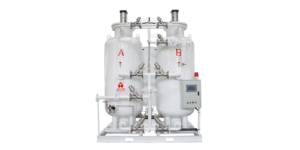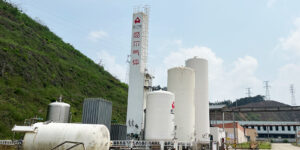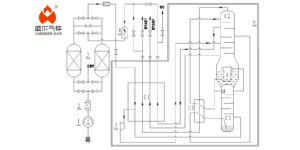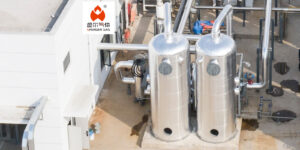Purity is an important technical parameter of nitrogen gas, which is classified into three levels according to national standards. The industrial nitrogen, pure nitrogen, and high purity nitrogen. This article mainly focuses on high purity nitrogen, detailing its classification, differences from liquid nitrogen, and its industrial applications.
Classification of nitrogen purity
Definition of Nitrogen Purity Nitrogen purity refers to the proportion of nitrogen contained in a sample compared to the existing impurities. Depending on the impurities in nitrogen, such as oxygen, water vapor, carbon monoxide, and carbon dioxide. Nitrogen can be divided into several categories, which play a crucial role in determining its suitability in industrial processes.
Ultra High Purity Nitrogen: This typically contains a purity of over 99.9999% (six “9s”), meaning less than one part per million of impurities. This level of nitrogen is commonly used in industries sensitive to impurities, such as semiconductor manufacturing and optoelectronics.
High Purity Nitrogen: This generally contains a purity of 99.998% to 99.9998%, with low impurity content. It is suitable for industries requiring high purity but not reaching ultra-high purity levels.Such as metal processing, heat treatment, and graphene preparation.
Pure Nitrogen: The purity of pure nitrogen is typically between 99.5% and 99.998%. Although slightly lower in purity compared to ultra-high purity and high purity, it is still sufficient for many industrial applications, such as food packaging, chemical production, and aerospace.
Industrial Grade Nitrogen: The purity of industrial grade nitrogen generally ranges from 95% to 99.5%. Although the impurity content is relatively higher, it can still meet the needs of many industrial processes, such as gas blanketing, gas filling, and gas transportation. Based on the different purity levels of nitrogen, suitable nitrogen can be chosen for specific industrial applications to ensure process stability and product quality.
Difference between High Purity Nitrogen and Liquid Nitrogen
High purity nitrogen refers to gaseous nitrogen with a concentration higher than 99.998%. Different manufacturers may have slightly different classifications for it, but it is typically classified as “zero grade” fraction. Zero-grade high purity nitrogen is classified as such because it contains less than 0.5 parts per million of hydrocarbon impurities. Liquid nitrogen is a liquid form of nitrogen, usually at extremely low temperatures (around -196°C).
Both of them are different forms of nitrogen.
Their main differences lie in their states and applications. Liquid nitrogen is typically used for applications requiring extremely low temperatures, while high purity nitrogen is mainly used in industrial processes requiring high gas purity, such as gas blanketing and material processing.
The production equipment also varies. High purity nitrogen can be produced using PSA nitrogen generators or cryogenic air separation nitrogen production equipment. However, for the large-scale industrial liquid nitrogen used in industry, only cryogenic air separation nitrogen production equipment can be used for production.
Application of High Purity Nitrogen in Industry
There will be a continued stable demand for high purity nitrogen in the global metal manufacturing industry. Especially for on-site nitrogen generator systems, as the cost advantages become more apparent. Additionally, high-gas-nitrogen can be used to improve graphene, enhancing its electrocatalytic activity stability. And finds widespread application in the growing fuel cell market, thus increasing the demand for high gas nitrogen. However, traditional production methods such as distillation and liquefaction may limit the growth of the high gas nitrogen market due to their high costs and energy consumption.
The demand for high purity nitrogen in the food industry is expected to grow rapidly to meet the increasing global population’s demand for food. Furthermore, it also has wide applications in fields such as pharmaceuticals and electronics.
Meanwhile, high purity nitrogen generators are gaining attention in industries such as oil and gas, food and beverage. As they offer numerous advantages over traditional supply methods, such as cost savings, convenience, and safety. These generators are designed to supply high gas nitrogen continuously, safely, and stably, enhancing end-user sustainability, profitability, and reliability.








